Hassan Ibrahim | Khaled al-Jeratli | Ali Darwish
On the rubble of his destroyed home in the Damascus neighborhood of Jobar, Mohammad prostrated in gratitude for his return to Syria after 11 years of waiting, feeling a mix of conflicting emotions between longing for “the soil of the homeland after the fall of al-Assad” and sorrow for the neighborhoods devoid of life, which seemed desolate without their residents, crumbling and gasping for breath.
“Jobar needs ten years to be rebuilt,” he said with a free sigh and a desperate inhale after a tour in its fatigued, unrecognizable alleys. The young man noted that the urban situation is catastrophic; the destruction and “looting” have affected everything from homes, places of worship, and graves, to the surviving buildings that appear like mines ready to explode at any moment, as networks of tunnels penetrate their foundations and sever their connections.
Mohammad spent 17 days in Syria, his nights in a hotel in the capital and his days touring some provinces. He linked his return from Germany to establishing stability in Syria through the reconstruction of the neighborhood, availability of basic services such as water, electricity, and internet, improved economic conditions, controlling security breaches, and stabilizing the education system for his children.
Mohammad is one of hundreds of thousands of Syrians whose desire to return to their homeland for visits or settlement has been fueled by the fall of the Syrian regime and the escape of Bashar al-Assad. This desire is accompanied by hesitation and confusion about staying in a country worn by war, which the regime and its forces have left in ruins and disarray across all sectors, transforming Syria into one of the world’s leading exporters of refugees. UN figures indicate that 6.3 million Syrians fled abroad from 2011 until mid-2024.
For years, the issue of the flow of Syrians abroad has occupied decision-making circles in global policies. The Syrian refugee has been a card on the negotiation table. Some countries have demanded the return of Syrians, while others have urged the establishment of safe zones in Syria under the regime of the ousted Bashar al-Assad. Some nations halted asylum requests and only received workers, while others forcibly deported Syrians, considering their presence as a political burden.
In this context, Enab Baladi explores the opinions of Syrian refugees and expatriates regarding their desire to return to Syria, the motives behind it, and the obstacles to remaining there. It sheds light on the return issue, the actions taken by countries to repatriate refugees, and the conditions required for a safe and dignified return that does not lead to negative repercussions or exacerbate other crises. It also discusses with experts and researchers the possibilities and outcomes of this return.
Predictions for the return of 1.5 million refugees
What do Syrians think?
The fall of the Assad regime has pushed refugees in neighboring countries to hasten their return to Syria through official land crossings, with families returning from Lebanon via unofficial routes from the Arsal and Wadi Khaled areas, followed by arrivals through Damascus International Airport.
Since November 27, 2024 (the start of the “Deterrence of Aggression” battle) until February this year, approximately 500,000 Syrians have returned to their homeland, with expectations that up to 1.5 million Syrian refugees will return from neighboring countries and 2 million displaced persons will return to their areas inside Syria during 2025.
Hours after the announcement of Bashar al-Assad’s escape toward Moscow, changes began to emerge in the ways of dealing with Syrian refugees, especially in European countries. The United Kingdom and several European nations decided to suspend the processing of Syrian asylum applications until the new shape of Syria becomes clear and to reevaluate their stance regarding the situation.
For its part, the United Nations High Commissioner for Refugees (UNHCR) described the current situation in Syria as “uncertain and highly changeable.” However, it also considered that “suspending the processing of asylum applications from Syrians is acceptable as long as these individuals are able to submit their asylum requests.”
The agency emphasized in a statement the importance of receiving the asylum applications of Syrian individuals and continuing to grant waiting asylum seekers the same rights that all other asylum seekers enjoy, including regarding reception conditions.
It added, “No asylum seeker should be forcibly returned, as this would violate states’ commitment to the principle of non-refoulement.”
Meanwhile, millions of Syrian refugees are still trying to assess the rapidly changing situation and consider the level of safety in Syria and the extent of respect for their rights before they can make an informed voluntary decision to return home.
The humanitarian and economic situation in Syria remains bleak and complex, with 16.7 million people needing humanitarian assistance, approximately 15 million Syrians in need of health services, and 13 million facing severe food insecurity, while the number of displaced persons in Syria has reached 7.4 million.
The Prime Minister of the interim Damascus government, Mohammed al-Bashir, stated at the beginning of his term after the fall of the regime that he inherited a Syrian treasury empty of foreign currency, with only the Syrian pound, which “is worth nothing.”
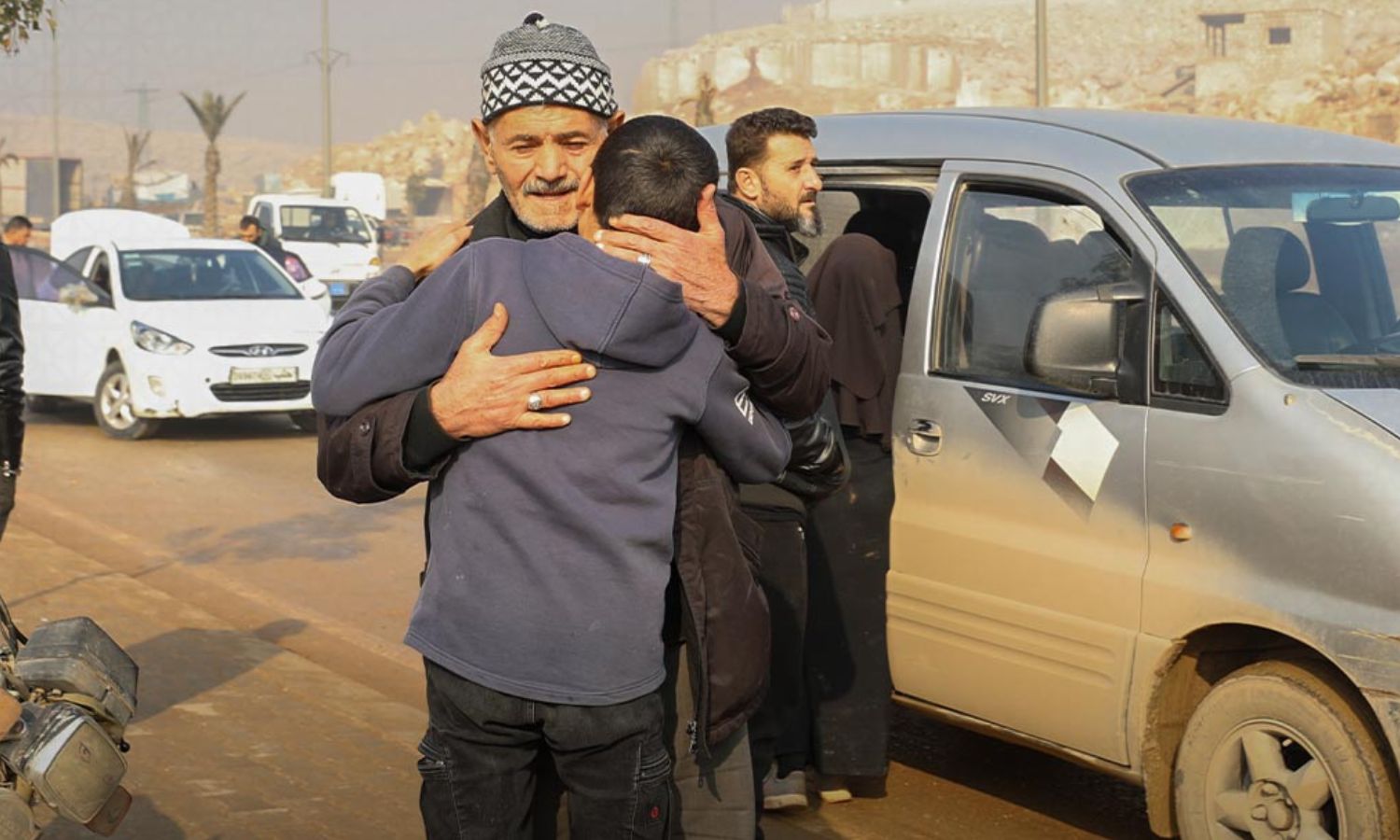
Return of Syrian refugees from Turkey to Syria after the fall of the previous Syrian regime – December 29, 2024 (Bab al-Hawa crossing)
What do Syrians say?
Desire alone is not enough for a complete return and settlement in Syria; the fragile economic, security, and service realities have dashed these hopes. This sentiment was reflected in a survey of the opinions of expatriates and Syrian refugees conducted by Enab Baladi, which included 56 individuals from various countries: Germany, Turkey, Austria, Lebanon, Kuwait, and Saudi Arabia.
According to the survey, 66.1% of respondents expressed a desire to return, 19.6% did not wish to return, and 14.3% were unsure or not currently thinking about it.
As for the agreement to return, which reached 66.1%, it was divided between settling in Syria, visiting only, visiting currently with a desire for future settlement, and visiting based on the stabilization of economic and security conditions. The responses were as follows:
Countries press for the return of refugees
A day after the fall of the previous regime, Germany suspended asylum requests submitted by Syrians until the political developments in Syria become clear. This freeze applies to about 46,270 asylum applications under review.
German Interior Minister Nancy Faeser stated on January 5 that the ministry has put a plan in place to address the refugees in the country. According to German law, the Federal Office for Migration and Refugees will review and revoke the protection granted if the refugees in Germany no longer need this protection.
The German minister presented a four-step plan to deal with the refugee issue, indicating that anyone who is well-integrated, working, has learned the German language, and has found new housing can be allowed to stay in Germany.
Germany is one of the largest European countries hosting Syrian refugees, with the number reaching 974,136 individuals by October 2024, of which more than two-thirds are seeking protection.
Austria, Greece, France, and Norway have also suspended the processing of asylum applications for Syrians.
Turkey and Jordan have taken several measures to facilitate the return of refugees, and the German government is considering allowing Syrian refugees to take one trip back to their homeland without affecting their refugee status in Germany.
Jordanian authorities allowed Syrians to leave the country using security cards or expired passports to facilitate their return without complications.
As for Turkey’s measures to facilitate the return of Syrian refugees, they include:
- Allowing a family member to visit Syria three times in preparation for their return during the first six months of 2025.
- Allowing Syrians who use their cars in Turkey to leave the country easily after registering with a notary, along with transporting their furniture.
- Exempting returning Syrians from banking transactions for money transfers, facilitating cash movement across Turkish borders without needing to conduct bank transactions.
- Modifying procedures related to carrying money and jewelry upon departure, allowing individuals to carry amounts up to €10,000 or 25,000 Turkish lira, while bank transactions must be performed for amounts exceeding these limits.
- Lifting restrictions on personal jewelry valued over $15,000.
- Facilitating the movement of Syrians through crossings and keeping crossings open 24 hours.
Visits only
Syrian human rights lawyer and director of the Syria Justice and Accountability Center (SJAC), Mohammad al-Abdallah, believes that thousands of Syrians will return to their homeland, but only for visits. He pointed out that the question of permanent return to settle in Syria is a “big question” since seven key provinces in Syria are devastated, meaning that many aspects of daily life are destroyed in various cities, even in the vicinity of Damascus.
Al-Abdallah told Enab Baladi that Syria lacks the vital components needed for Syrians to return and settle, as the damages extend beyond the destruction of buildings to schools, service institutions, infrastructure, and hospitals.
He noted that those wishing to return to settle today are either individuals whose status does not allow them to remain in their asylum locations or those who have faced legal harassment, as seen in immigration offices in Turkey.
European race
The issue of asylum and the return of refugees is very complex in European legal circles, which was demonstrated by the actions of member states of the Union to prepare new regulations governing humanitarian asylum cases for over two years, set to take effect starting next March, according to governance researcher Dr. Bassam Hatahet.
Hatahet told Enab Baladi that since the overthrow of the Assad regime, a group of countries hastened to suspend new asylum applications and delayed the processing of other requests that remain pending while also delaying the renewal of residency for Syrians who entered European territories through family reunification transactions, especially for those who did not comply with labor laws, language learning, and integration.
He added that the first practical step taken by European countries toward Syria without al-Assad was the initiative to suspend sanctions on Damascus for two main reasons: first, to redraw the outlines of reconstruction and early recovery, and second, to end the classification of Syria as an unsafe country and arrange for the return of refugees who have not obtained permanent residency or citizenship.
According to Hatahet, during the 60 days following the regime’s fall, Europeans played various roles to accelerate legal cooperation and logistical and material support, urging a group of Arab countries to expedite work inside Syrian territory to rehabilitate part of the crucial infrastructure, especially electricity, financial transactions, and economic openness.
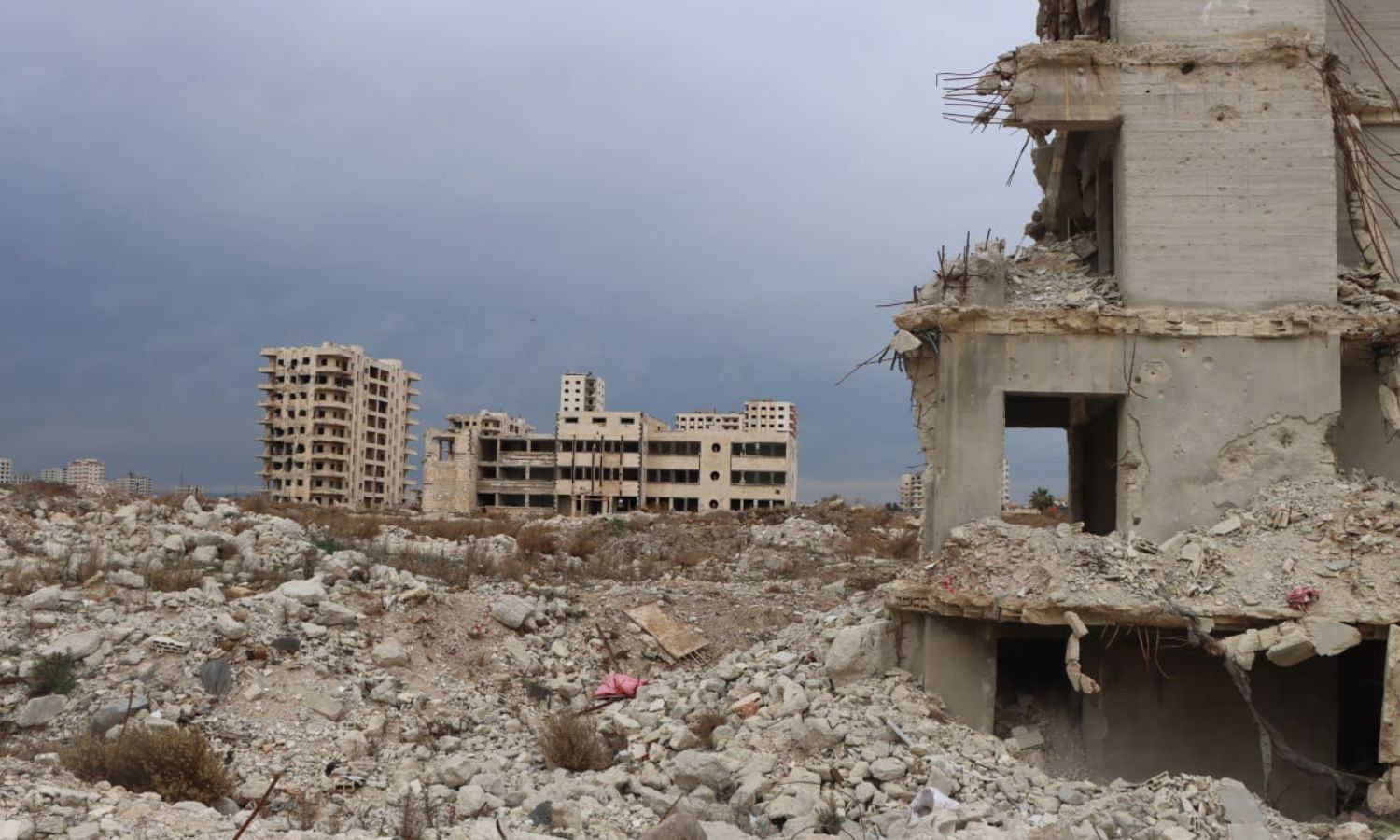
Destroyed homes and buildings at the hands of the former Syrian regime forces in the al-Waer neighborhood of Homs – January 29, 2025 (Syria Civil Defence)
Four steps to ensure a safe return
The array of reasons preventing Syrians from returning includes limited job opportunities, deteriorating economic and living conditions, security turmoil, political ambiguity, and part of the Syrians who do not wish to return currently due to their incomplete legal status and the desire not to lose their right to asylum.
For refugees, the most important matter is a safe and dignified return to their towns. The scale of destruction and the economic and humanitarian conditions pose significant obstacles to their return.
The director of the Syrian program at the Syrian Observatory of Political and Economic Networks, Karam Shaar, recalled the surveys conducted by the United Nations for Syrian refugees in neighboring countries to explore the main obstacles to their return. The rankings typically begin with poor living conditions and lack of job opportunities, alongside low security and a lack of essential services such as water and electricity, and absence of housing, along with the mandatory military service for males.
Shaar stated that the priorities identified by the United Nations regarding the barriers to Syrian return have not changed. A radical change regarding their return can only happen with the removal of these obstacles altogether.
He added that recovery in Syria, which may pave the way for the return of Syrians, requires the elimination of the obstacles that the United Nations has previously identified from the perspectives of the Syrians themselves alongside the existing economic sanctions on Syria.
In light of the obstacles to widespread return, Shaar highlighted the presence of motivations as well, stating that the rise of racist rhetoric and hostility towards refugees, treating them as undesirable minorities, drives some to return without considering the reality in Syria.
Nour al-Khatib, communication officer at the Syrian Network for Human Rights (SNHR), told Enab Baladi that safe return means ensuring that the returning refugee will not face arrest, retaliation, persecution, or any other violations that pose a threat to them. They must have the necessary components for a dignified life, including security, housing, essential services, and a legal environment, alongside the cancellation of any arbitrary decisions they faced, including property confiscation and judgments against them, and facilitating the granting of their legal documents.
To achieve these conditions, according to al-Khatib, several steps must be taken:
- Provide a Safe Environment: This includes ensuring security stability, halting clashes, bombings, and military operations, and confirming that the returnees will not be subjected to persecution or arrest based on their opinions or affiliations.
- International Legal Guarantees: Through issuing clear guarantees from the United Nations and influential countries that returnees will not face any violations, and establishing a mechanism for international monitoring of the rights of returnees to ensure accountability for any entity that violates their rights.
- Solutions for Living Conditions: Providing essential infrastructure, such as electricity, water, education, and healthcare, ensuring returnees’ right to restore their properties, or obtaining fair compensation if that is not possible, and providing job opportunities, reintegrating refugees into society in a way that preserves their dignity.
- Guarantees from Host State: By granting refugees the freedom of choice and not forcing them into involuntary returns, providing transparent information about the conditions in the areas they wish to return to, and offering legal support to those needing to recover their official documents.
Al-Khatib pointed out that achieving all these conditional requirements is still not available in Syria, and there are efforts from the transitional government to facilitate return, but it believes the situation is still premature.
Syrian Foreign Minister Asaad al-Shibani stated to the German news agency last month that there is no urgent need for Syrian refugees in Germany to return quickly, adding, “They are safe there.”
According to the UN High Commissioner for Human Rights, Filippo Grandi, the return of Syrian refugees to their homeland will take a long time.
On January 30, Grandi told Jordan’s Al-Mamlaka channel that many refugees are waiting to see how the situation in Syria develops before making a decision about returning.
Three days prior, Grandi called for international action to support returning Syrians, indicating the need for assistance in reconstructing homes, infrastructure, and restoring essential services such as healthcare, electricity, and clean water, as families “face tremendous difficulties” in returning.
The UN Office for the Coordination of Humanitarian Affairs (OCHA) warned three weeks after the regime’s fall that Syria still faces a “three-dimensional threat,” consisting of insecurity, economic crisis, and humanitarian crisis.
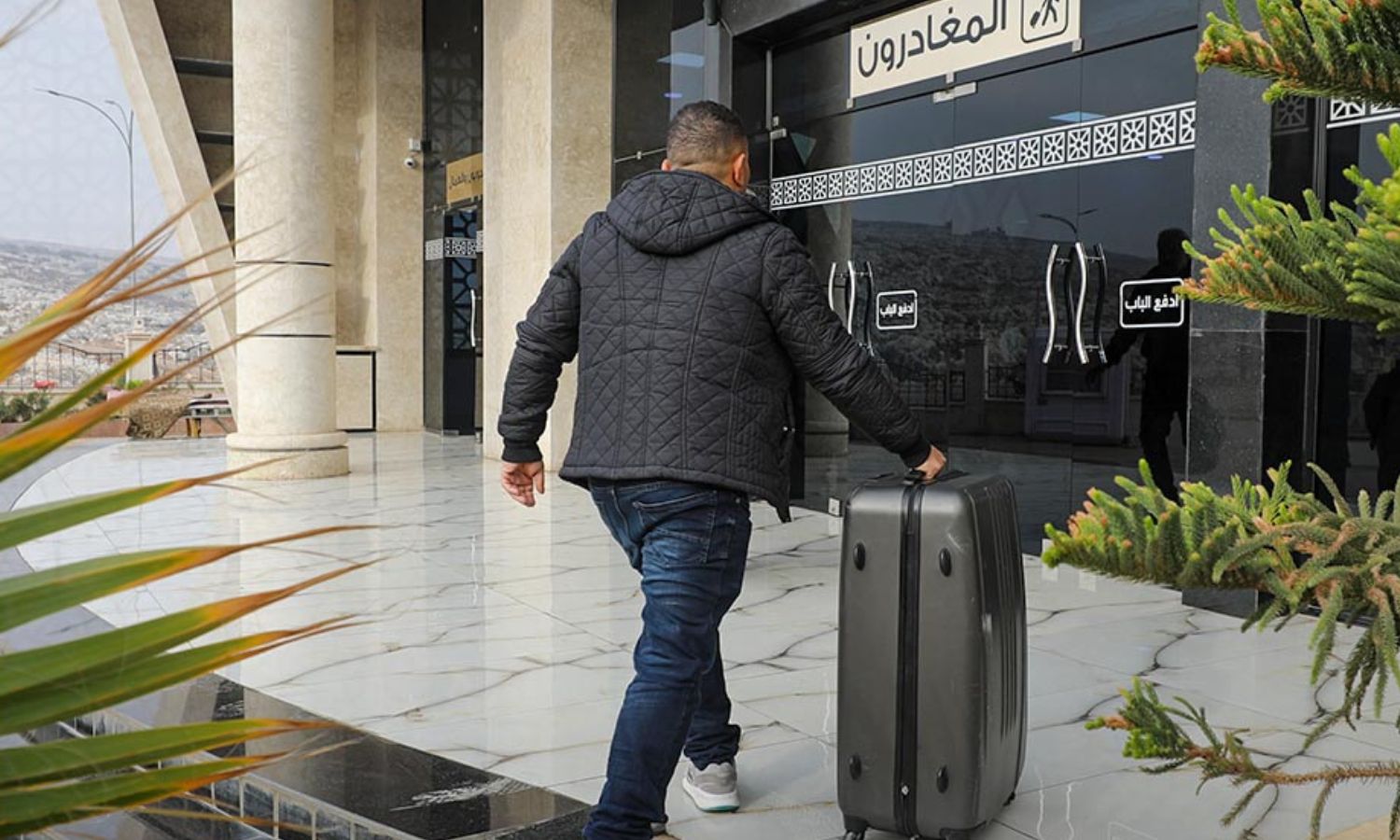
Syrians leaving for Turkey via the Bab al-Hawa crossing in northern Idlib – December 29, 2024 (Bab al-Hawa crossing)
Pressure leads to explosion
Officials and experts: Governments must wait
Syrian rights activist Mohammad al-Abdallah expects some countries to force Syrians to return “forcibly,” and this issue is not only related to Lebanon, Jordan, and Turkey (countries that have precedents in this area) but also to Western countries and EU members. European countries are working to offer incentives to encourage Syrian refugees to return by providing one-time payments ranging from €800 to €4,000.
Al-Abdallah stated in an interview with Enab Baladi that financial incentives will not contribute to pushing refugees to return; they are a form of threat regarding the repatriation of refugees, which continues to clash with reality in Syria. He added that Syria remains devastated, lacking the essentials for life, and is still not safe, particularly with the ongoing “grave violations,” especially in Homs province and the coastal regions of Syria.
The Syrian legal expert also mentioned that the “forcible” return of Syrians under current circumstances is illegal, emphasizing the need for the return to be voluntary, dignified, and safe.
The head of the International Organization for Migration (IOM), Amy Pope, stated that the widespread return of Syrian refugees would fuel the conflict in Syria and represent a heavy burden on the country, stressing that she does not encourage the return, as “communities are not ready to accommodate refugees.”
Pope urged caution in plans for the repatriation of refugees, noting that some communities may have to displace again due to the lack of clarity regarding life under the new authorities. UN Special Envoy for Syria Geir Pedersen confirmed that the humanitarian situation remains critical.
The communications officer at the Syrian Network for Human Rights, Nour al-Khatib, mentioned that most European countries do not consider Syria a safe country for return yet and do not force refugees into involuntary return, with the exception of some countries like Denmark, which has begun to restrict the residency of some Syrian refugees and tighten asylum policies.
Accelerating the return of millions of Syrians could impose additional pressures on Syria at a particularly fragile moment and could undermine the chances of a successful transition, according to a report prepared by Will Todman, a senior fellow in the Middle East Program at the Center for Strategic and International Studies (CSIS).
Todman noted that such acceleration could produce counterproductive outcomes that destabilize the broader Levant region, thwart the expectations of host communities, exacerbate social tensions, and lead to renewed displacement flows.
He considered that prematurely returning refugees would yield adverse results; if only the early returnees face challenges, their experiences may deter others from following. More importantly, the influx of returning Syrians would lengthen the chances of a successful transition in Syria.
If an excessively large number of refugees return at once, this could increase pressures on overstretched public services, exacerbate social tensions, and undermine the already slim prospects for a successful transition. The consequences would not be limited to Syria; the complete collapse of the state in Syria could force Syrians to flee again and increase pressures on neighboring countries that are likely to permit refugees to travel to Europe, according to Todman.
To avoid a wider crisis, donor governments should temper expectations of a swift return, formulate a comprehensive strategy for the safe return of refugees, and provide adequate funding to facilitate an organized process, which requires time, not swift decrees for their return, according to Todman.
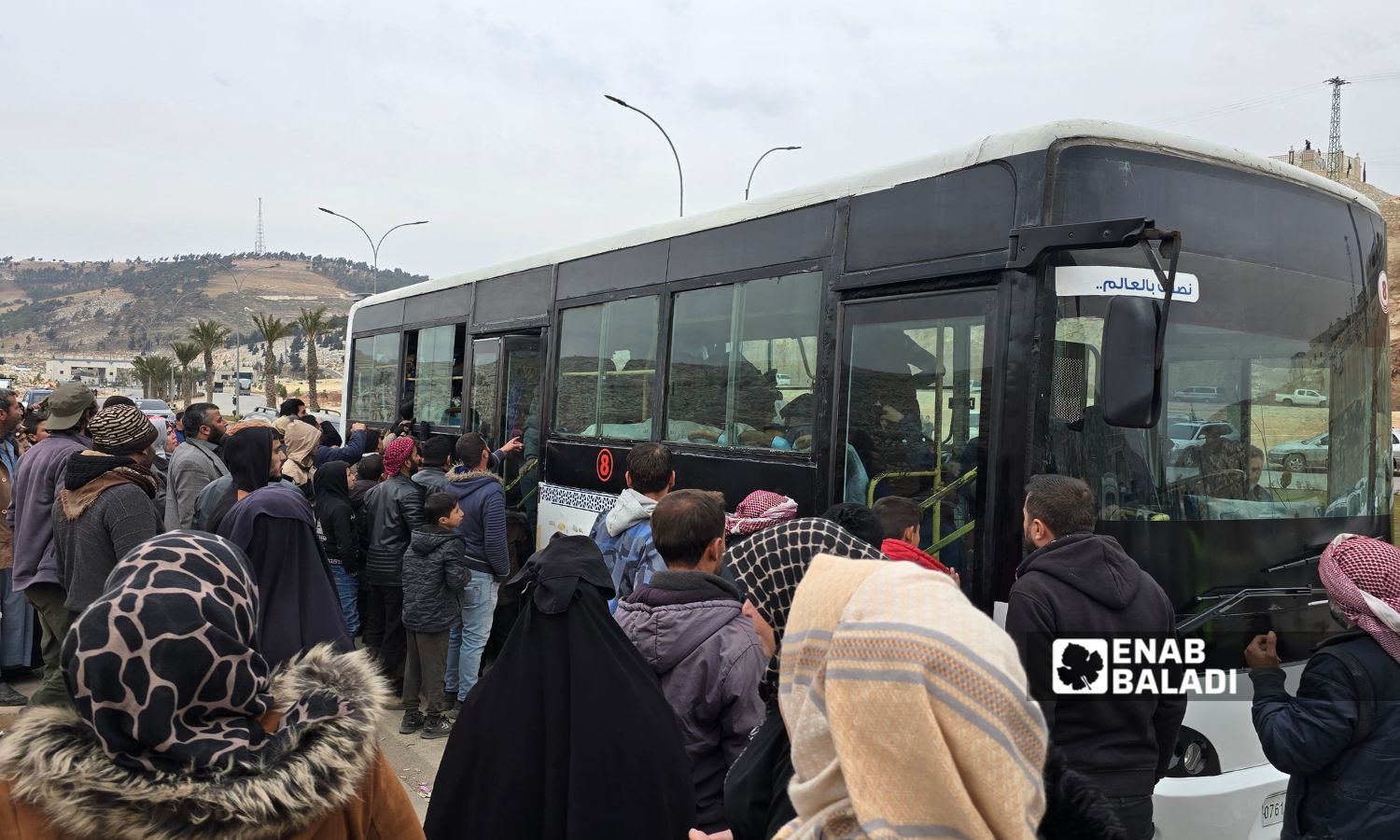
Syrians return from Turkey to their homeland following the fall of the previous regime – December 16, 2024 (Enab Baladi/Iyad Abdul Jawad)
Opportunity for the international community
The international community, including the countries primarily hosting Syrian refugees, has a critical opportunity currently to support the emergence of a safe, viable Syria capable of facilitating the return of all Syrians wishing to return, according to a report by the Migration Policy Institute (a non-governmental US organization).
In the field of migration, this includes making well-calibrated political decisions that balance the desire of Syrians to stay and return, requiring several steps.
Firstly, host countries must recognize that the departure of Syrians is likely to be a long-term phenomenon. For instance, it took nearly a decade after the end of the conflict in the Balkans for half a million refugees and displaced persons from Bosnia and Herzegovina to return home.
Secondly, host governments need to reassure Syrians on their territories about the stability of their situation in the short term and clarify what is unclear in decisions to reassess refugee status, avoiding creating unnecessary panic among them.
Thirdly, when returns occur, host countries will need to ensure that the return process enables returnees to reintegrate sustainably, such as allowing returnees to take preparatory trips to Syria to verify security conditions, secure housing, or find employment, countering their fears of return.
Fourthly, sustainable return is bolstered by providing reintegration support. Donor countries should consider offering this assistance not only to Syrians they host but also to those living in neighboring countries. A one-time return incentive of €1,000 will not significantly aid Syrians in reintegration.
Fifthly, if host countries want returns to be sustainable, they will need to invest in Syria’s stability, including continuing developmental support for Syria and its neighbors (as the European Union has begun to do).
if you think the article contain wrong information or you have additional details Send Correction
النسخة العربية من المقال
-
Follow us :













 Return of Syrian refugees from Turkey to Syria after the fall of the previous Syrian regime - December 11, 2024 (Bab al-Hawa crossing)
Return of Syrian refugees from Turkey to Syria after the fall of the previous Syrian regime - December 11, 2024 (Bab al-Hawa crossing)





 A
A
A
A
A
A
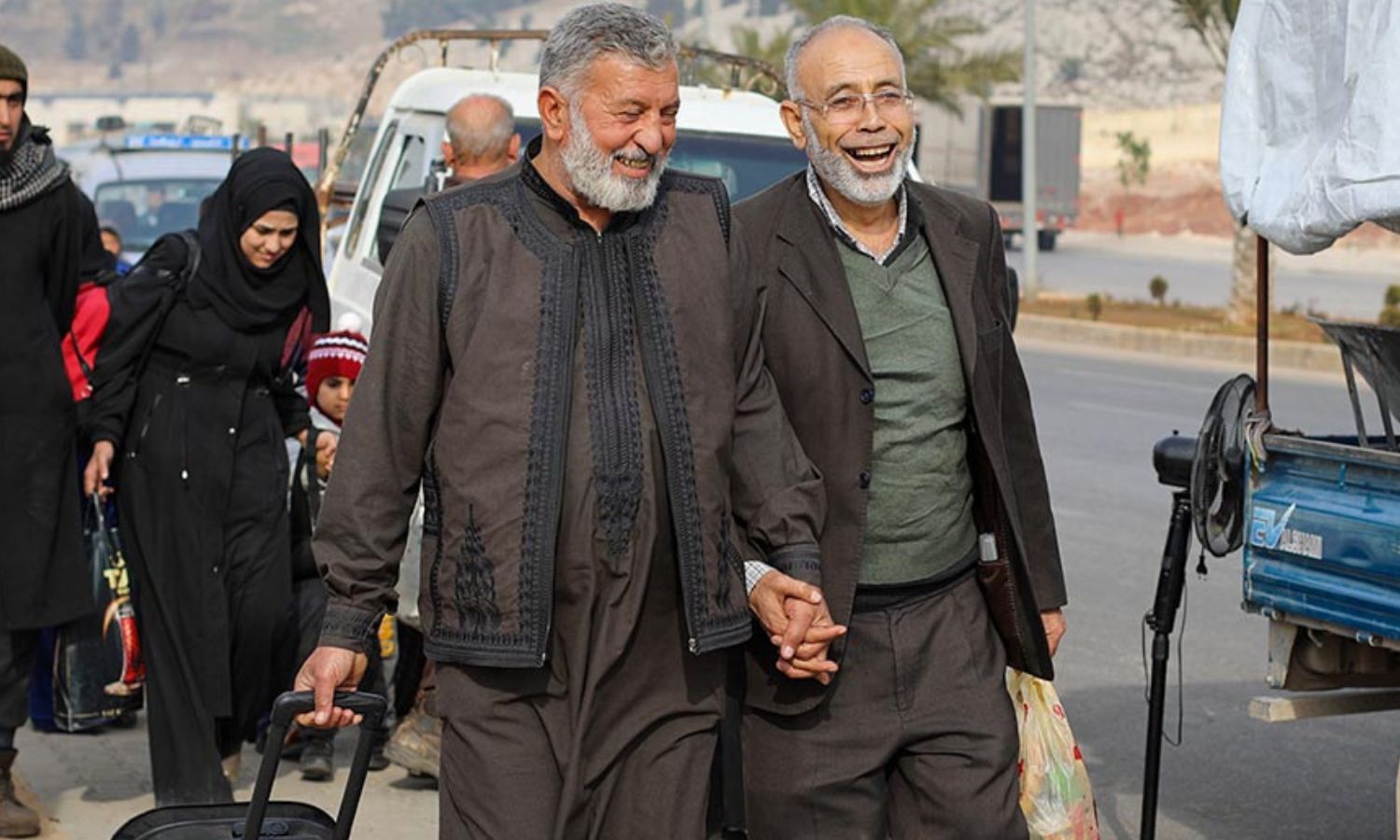







 More In-Depth
More In-Depth